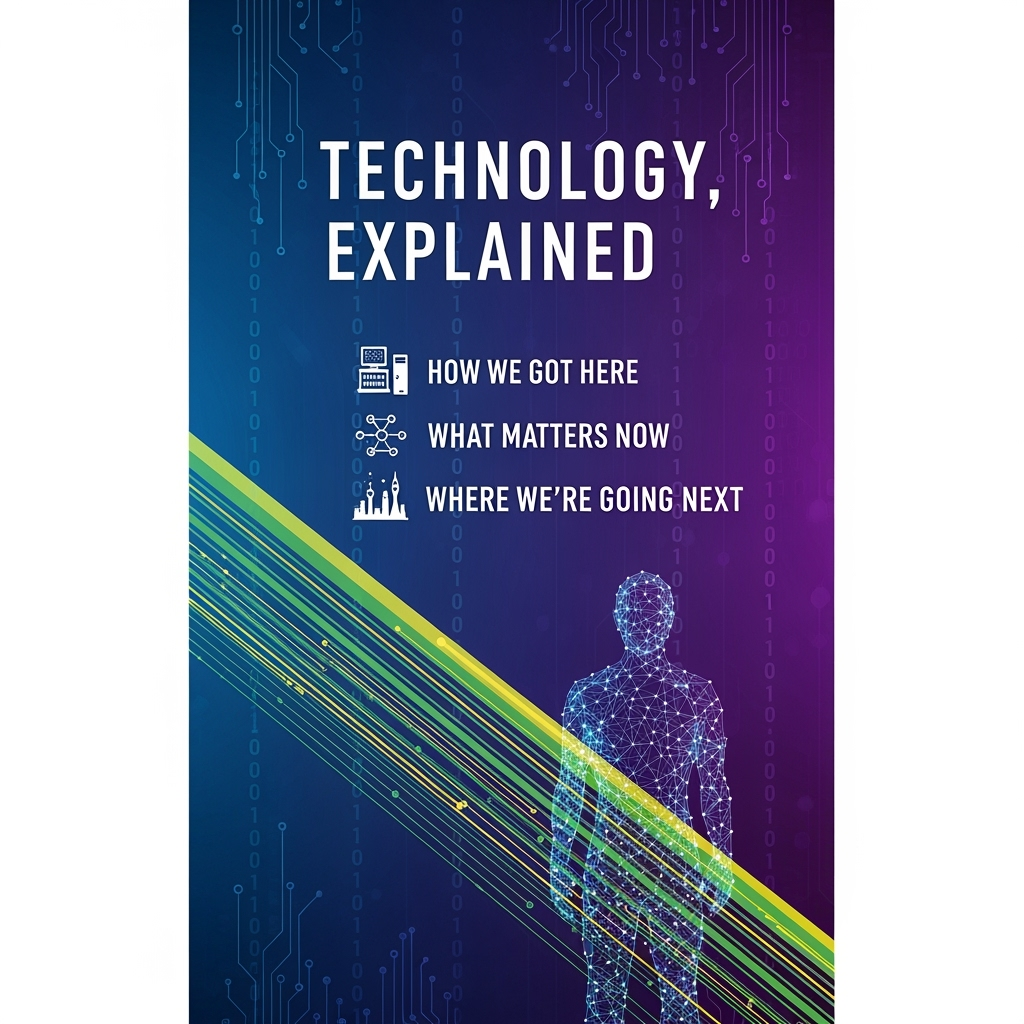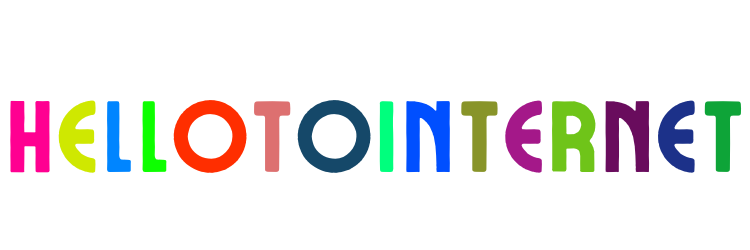Technology, Explained: How We Got Here, What Matters Now, and Where We’re Going Next

Introduction: Technology is the Story of Scaling Human Intent
Technology isn’t just gadgets. It’s how we turn ideas into systems that scale—so that one person’s insight can empower millions. From fire to fiber optics, tools are leverage. They extend reach, compress time, and shift what’s possible. They also reshape our institutions, our habits, and our sense of what a “normal” day looks like. Each wave of technology—agriculture, industry, electricity, computing—has rewritten the rules of production and connection.
Today, we’re living through a stack of overlapping transformations: artificial intelligence, bioengineering, climate tech, and the securitization of digital infrastructure. The pace feels dizzying because it is. Yet beneath the churn, core patterns endure. This article offers a clear, human-centered tour of modern technology—how it’s built, what it enables, and how we can steer it wisely.
- From Tools to Systems: The Arc of Technological Progress
- Tools reduce friction. A hammer turns force into precision. A compiler turns logic into machine instructions. A cloud service turns capital expense into an API call.
- Systems embed tools into routines. Roads invite cars; standards invite interoperability; app stores invite a global developer base. The magic is not just the tool, but the network of complementary pieces that make it useful at scale.
- Progress compounds via feedback loops:
- Learning curves: Costs fall as we build more (think solar panels, batteries, and chips).
- Standards: Shared protocols (like USB, HTTP, and container formats) create a “plug-and-play” economy.
- Abstraction: We hide complexity under layers, so people can innovate without reinventing the wheel.
Big lesson: Sustained progress is not about a single breakthrough. It’s about stacking small, reliable wins into a platform that makes the next breakthrough cheaper and faster.
- The Invisible Infrastructure That Makes Everything Work
Most of the wonder lives behind the scenes. Consider:
- Semiconductors: Decades of painstaking lithography, design tools, and supply chains yield chips that are tiny cities of transistors. Their cost/performance curve has powered software’s ambitions.
- Cloud computing: Elastic capacity turns experimentation from a capital risk into a few clicks. Startups and labs can scale globally without building data centers.
- Networks: Subsea cables, routing protocols, content delivery networks, edge nodes—this lattice gives us streaming, payments, telemedicine, and real-time collaboration.
- Standards and governance: Bodies that steward spectrum, encryption, web APIs, and safety norms rarely trend on social media, yet keep the world interoperable.
If you want to understand what’s possible next, study the plumbing. Innovations become inevitable when the foundation quietly gets good enough.
- AI’s Moment: Pattern Engines, Not Crystal Balls
Artificial intelligence has moved from niche lab demos to everyday utility: summarizing, generating, translating, classifying, coding, and enabling new interfaces. Key truths a practical person should keep in mind:
- Strengths: Generative models are stunning at remixing patterns in language, images, code, and audio. They compress vast data into flexible, conversational tools and can accelerate research, design, and support.
- Limits: They do not “understand” like humans. They infer, they approximate, and they sometimes fail confidently. Hallucinations are not moral errors; they’re statistical misfires—fixable with grounding, verification, and workflow design.
- Best use: Put AI inside a system with guardrails—clear prompts, retrieval from trustworthy sources, checkpoints, and human oversight where stakes are high.
- Long-term questions: How do we align model behavior with human values across cultures? How do we measure safety and reliability reliably? Who gets to decide where the red lines are?
Think of AI as a new interface and a new co-processor. The organizations that win won’t be the ones that shout “AI!” the loudest, but those that quietly redesign their processes around its strengths and fail-safes.
- The Body Meets the Machine: Biotech and Neurotech
Biology is becoming programmable. Tools like high-throughput sequencing, gene editing, and computational protein design are shrinking the gap between intention and outcome in medicine, agriculture, and materials.
- Therapeutics: Personalized medicine, cell and gene therapies, and smarter clinical trials promise treatments tuned to the person, not just the disease category.
- Diagnostics: From portable sequencing to at-home tests, early detection is improving. The earlier we see a pattern shift, the easier it is to intervene.
- Synthetic biology: Microbes that produce chemicals and materials with lower emissions. Imagine “biofoundries” where new enzymes and pathways are designed as routinely as software functions.
- Neurotech: Brain-computer interfaces and noninvasive neuromodulation aim to restore movement, treat depression, and someday enable richer human-computer symbiosis.
Caveat: Biology is a living system with staggering complexity. Iteration is slower than in software, and ethics must be core: consent, equity, privacy of biological data, and careful risk assessment.
- Planetary Technology: Climate, Energy, and Resilience
Climate tech is no longer a niche cause—it’s an engineering agenda involving electricity, heavy industry, agriculture, and finance.
- Electrify almost everything: Heat pumps, induction stoves, and EVs move energy use from combustion to electricity, where we can decarbonize generation.
- Clean generation: Solar and wind costs have plummeted; batteries and grid-scale storage help bridge intermittency; modernized grids and better market design unlock more value.
- Firm power and new fuels: Advanced nuclear, enhanced geothermal, and hydrogen derivatives may anchor industrial processes and long-duration needs.
- Materials and processes: Low-carbon cement and steel, carbon capture where unavoidable, and circular manufacturing to reduce waste.
- Adaptation: Sensors, better hydrology forecasts, resilient urban design, and insurance innovation help us live with variability. Resilience is not resignation; it’s respect for reality.
Winning here isn’t just moral; it’s competitive. The nations and companies that master clean, reliable, affordable energy will anchor the next industrial wave.
- Work and Learning in a World of Capable Tools
Technology changes tasks before it changes occupations. That’s the key to understanding work in flux.
- Task unbundling: Many jobs are bundles of research, communication, coordination, and craft. Tools automate parts, not wholes, so roles evolve.
- New complements: Human strengths—judgment, empathy, cross-domain synthesis, and responsibility—become more valuable when commodity tasks are cheap.
- Education shifts: From one-shot credentials toward continuous skilling. Emphasis moves to problem framing, data literacy, collaboration, and the ability to learn new tools quickly.
- Managerial duty: Design workflows where humans supervise tools, not the other way around. Clear protocols, explicit review steps, and accountability reduce error and raise throughput.
We don’t need to pick a side between “robots will take all jobs” and “nothing will change.” The pragmatic path is to re-architect work so that people spend more time on the meaningful parts.
- Design, UX, and the Pursuit of Humane Technology
Great technology isn’t just powerful; it’s legible. The interface is the user’s reality, and choices there shape outcomes.
- Friction is a feature: A bit of thoughtfully placed friction can prevent errors, prompt reflection, and protect privacy.
- Defaults matter: Sensible defaults beat settings pages that only power users touch. Design your future support tickets away.
- Progressive disclosure: Reveal complexity as needed, not all at once.
- Feedback and forgiveness: Clear errors, undo buttons, autosave—these make users brave enough to create.
- Accessibility: Designing for edge cases helps everyone. Captions, high-contrast modes, keyboard navigation—this is table stakes for inclusive tech.
Good UX respects attention and intention. As a bonus, it reduces churn, support costs, and the need for apologetic blog posts.
- Security and Trust: The Unseen Battle
As software eats the world, cybersecurity becomes civic hygiene.
- Defense-in-depth: No single barrier is perfect. Layer identity, device health checks, network segmentation, and behavior monitoring.
- Least privilege: Give access on a need-to-use basis. Permissions proliferate; audits prune.
- Secure by default: Encryption in transit and at rest, automatic updates, and secure defaults out of the box.
- Supply chain vigilance: Code dependencies and firmware matter. Trust is transitive; one weak link can ripple widely.
- Human factors: Phishing, social engineering, and fatigue defeat even strong tech. Training and intuitive security UX matter.
Security is not a product—it’s a culture of carefulness. The best security posture is boringly consistent, like brushing your teeth, but with fewer minty flavors.
- Governance, Policy, and the Geopolitics of Standards
Technology doesn’t float in a vacuum; it swims in the currents of policy and power.
- Standards as soft power: The group that writes the spec often shapes the market. Think of 5G, payment rails, or cryptographic suites.
- Data governance: Privacy, cross-border flows, and data localization rules reshape product architectures and partnerships.
- Competition and antitrust: Platforms can create lock-in. Policy tries to balance innovation incentives with open markets and fair play.
- Safety regulation: Sectors like health, transportation, and energy face high stakes; testing, certification, and post-deployment monitoring protect the public.
Healthy governance aims for clarity and adaptability. Overly rigid rules freeze progress; overly vague rules invite abuse. The trick is iterative regulation that learns.
- Economics of Innovation: Curves, Complementarities, and Diffusion
Why do some technologies explode while others stall?
- S-curves: Early progress is slow, then fast, then plateaus as physics or demand saturates. Learning rates measure cost declines per doubling of cumulative production.
- Complements vs. substitutes: A new tool that complements existing systems spreads faster than one demanding wholesale change. Smartphones replaced many gadgets, but they also rode cellular networks and app ecosystems already in flight.
- Distribution matters: Innovations that are easy to distribute and maintain (over-the-air updates, subscriptions, APIs) outpace those requiring heavy physical rollout.
- Incentives: Aligning adopter incentives—cost savings, convenience, status, compliance—beats lectures about “the future.”
If you want adoption, find the friction and pay it down. If you want transformation, build the complements first.
- Frontiers: Quantum, Space, and Spatial Computing
- Quantum technologies: Not a general-purpose replacement for classical computing, but promising for certain workloads like simulation and optimization. Meanwhile, quantum sensing and communications may arrive sooner and sneak into products without fanfare.
- Space: Cheaper launches and small satellites have turned orbit into a data layer for Earth—imaging, connectivity, and climate monitoring. Logistics, debris mitigation, and spectrum coordination are the new ground game.
- AR/VR and spatial computing: The aim is not novelty, but utility—hands-free workflows, shared 3D collaboration, training, and design. Success depends on comfort, content, and seamless integration with existing tools.
Frontiers become mainstream not by spectacle, but by solving repetitive pains better than today’s tools.
- The Messy Middle: What’s Not Working (Yet)
Honest accounting helps us build better.
- Fragmentation: Too many passwords, too many adapters, too many “one more platform” logins. Identity and interoperability remain clunky.
- Tech debt: Legacy systems carry the past into the future, limiting agility. Rewrites are costly; strangler patterns and modularity help.
- Bias and inclusion: Datasets reflect history’s inequities; products can amplify them. Better processes—diverse teams, audits, and measurable fairness goals—beat slogans.
- Information integrity: Virality outruns verification. We need provenance tools, friction for unverified claims, and incentives for quality.
- E-waste and lifecycle design: Short device lifespans and poor repairability are not sustainable. Right-to-repair, modular hardware, and efficient recycling can shift the curve.
These aren’t reasons for cynicism; they’re a to-do list.
- Principles for Building Technology That Earns Trust
If you build, ship, buy, or rely on tech, these principles travel well:
- Start with real problems: Be unromantic about what users actually do, not what they should do. Observe, measure, iterate.
- Make it legible: Clear mental models, honest error messages, understandable policies. If a reasonable person can’t tell what happened, it’s a bug.
- Design for the long run: Favor open formats, good documentation, and graceful failure modes. Today-you should be a friendly ancestor to future-you.
- Respect constraints: Legal, ethical, and physical constraints are design inputs, not afterthoughts.
- Build feedback loops: Telemetry, user research, postmortems. Learning beats guessing.
- Default to privacy and security: Collect less. Keep it safe. Explain why.
- Measure outcomes, not outputs: Features shipped is a vanity metric; user benefit is the real KPI.
- Share the upside: Upskilling, fair pricing, and room for third-party ecosystems create allies, not just customers.
- Technology and Meaning: Keeping Humans at the Center
A quiet truth underlies all of this: technology is a means. It should widen the circle of ability—helping more people learn, heal, build, express, and belong. That means balancing ambition with stewardship:
- Ambition: Dare to solve hard problems. The world has plenty of them.
- Stewardship: Ask who bears the risk, who gets the reward, and who decides when trade-offs are acceptable.
- Humility: Expect surprises. Build systems that fail safely and learn quickly.
A Few Concrete Examples of Leverage in Action
- A rural clinic leverages telemedicine and portable diagnostics to deliver specialist-grade care without patients traveling hundreds of miles. The tech is a network of tiny decisions: bandwidth optimization, resilient devices, and clear clinician interfaces.
- A manufacturer pairs sensors with predictive models to reduce downtime. Success hinges on change management as much as algorithms—technicians need trust in alerts and time to act.
- A city upgrades grid software and adds distributed storage. The result: fewer outages during heat waves, lower bills from smarter demand response, and room for more rooftop solar.
- A small creative studio uses generative tools for storyboarding and iteration, freeing time for client discovery and craftsmanship. Technology accelerates the early “bad draft” phase so the team can spend more hours on the good stuff.
Ethics Without Hand-Waving: How to Make It Real
- Pre-mortems and red teaming: Before launch, imagine misuse and failure. Invite skeptics. Make mitigation part of the schedule, not a bonus round.
- Minimum viable guardrails: Ship safeguards alongside features. For example, rate limits, content filters, and audit logs from day one.
- Transparency by design: Document known limitations, training data sources when appropriate, and evaluation methods. Silence creates distrust; clarity earns patience.
- Sunset plans: Some features age badly. Have a path to deprecate responsibly and communicate well.
The Human Side of Momentum
A final reason to be optimistic: capability snowballs. When a tool lowers the cost of trying, more people try. When more people try, we discover more edge cases, fix more bugs, and find better fits. Creativity compounds. That doesn’t erase harms or make progress inevitable. It does mean we can choose the slope of the curve by expanding who gets to participate.
A Short Guide for Readers Who Want to Act
- If you’re a student: Learn the fundamentals (math, statistics, systems thinking), but also cultivate taste—what good design feels like, how to frame questions, how to write clearly.
- If you’re a builder: Invest in observability, testing, and user research early. Technical excellence is a service to your future velocity.
- If you’re a leader: Align incentives with the behavior you want. Celebrate teams that reduce risk and debt, not just those who ship shiny features.
- If you’re a policymaker: Pair principles with pilots. Iterate regulations as evidence accumulates. Bring domain experts and users into the room.
- If you’re a curious citizen: Ask products to explain themselves. Demand privacy by default. Choose tools that respect you.
Conclusion: Clear Eyes, Full Stack, Can Build
Technology is the practical art of making new states of the world achievable and repeatable. Its real power shows up not in press releases, but in quiet reliability: lights that stay on, payments that just work, models that stay within their remit, and tools that make people braver.
We don’t have to choose between boosterism and despair. We can take a builder’s posture: curious, responsible, and a bit stubborn about making things better. The next decade will reward those who understand systems, respect constraints, and ship humane designs. That’s not just good strategy—it’s good citizenship.
And if, along the way, your toaster insists on a firmware update before it will make breakfast, take heart: even our appliances are trying to learn. The rest of us can, too.



